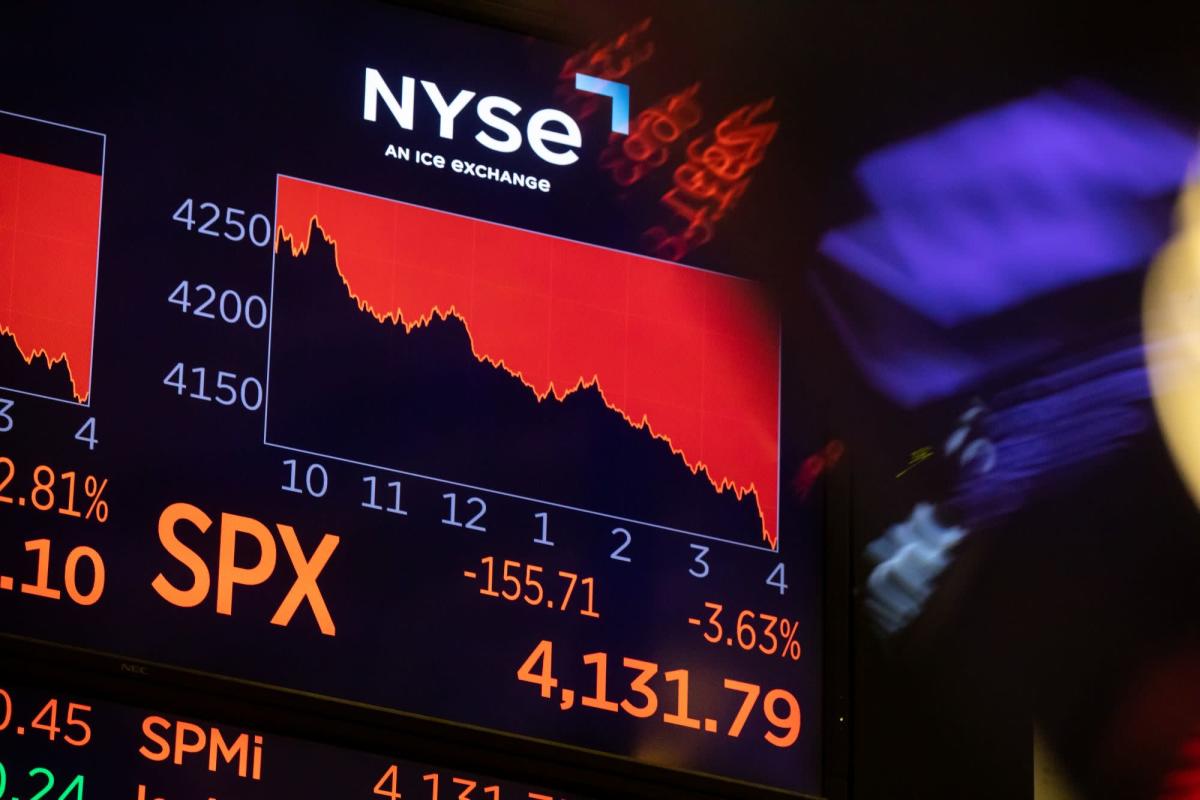
(Bloomberg) — A two-year run in stocks that began at the depths of the coronavirus panic and became one of most powerful bull markets on record is on the brink of extinction.
The S&P 500 slipped as much as 2% on Friday, pushing it 20% below its record closing high on Jan. 3. The drop is part of a seven-week slide in the broad measure that qualifies as the longest since March 2001.
At both ends of the advance sits the Federal Reserve, whose unprecedented efforts to boost the economy in early 2020 helped the stock benchmark more than double through the end of last year. Now, with central bankers reining in stimulus as inflation surges, shares are selling off at the hands of investors convinced a recession is all but unavoidable.
“All of this has been driven by two major forces that were reiterated this week: one is inflation and how stubbornly high it is. And the second is how aggressive the Federal Reserve will likely be to get it under control,” said Art Hogan, chief market strategist at National Securities.
The S&P 500 is currently trading at 3,829. If the losses hold through the close of trading, the S&P 500 will enter its first bear market since the pandemic hit in February 2020.
The downturn is being led by consumer discretionary stocks, with the sector plunging 35% since the S&P 500’s January high. Communications services and information technology are also among the biggest decliners. The only S&P 500 sector to gain this year is energy, which is up 41% since the index hit its peak.
Friday’s selloff caps a volatile week for the US stock markets, which saw consumer stalwarts that thrived throughout the pandemic-era bull market buckle.
Target Corp. plunged the most since Black Monday in 1987, a day after Walmart Inc. suffered a similar fate, on signs that runaway inflation is hurting the US consumer and eroding profit margins.
“The Fed has been a primary driver of these market declines, but the latest news from retailers has added additional concerns to the outlook for the economy,” said Adam Phillips, managing director of portfolio strategy at EP Wealth Advisors. “Now that we’ve breached the 20% level, the big question will be where do we go from here?,”
Since 1929, the S&P 500 has entered a bear market 17 times, including Friday, according to data from CFRA Research. The longest period lasted 998 days from September 1929 to June 1932, and the longest recent bear market was 929 days from March 2000 to October 2002, according to CFRA. The shortest was just 33 days from Feb. 19, 2020, to March 23, 2020, CFRA’s data show.
On average, bear markets result in a decline of roughly 38%, although since 1946 the average loss is less than 33%, according to CFRA. And they’ve become less frequent, with only five occurring since 1990, including this most recent one.
©2022 Bloomberg L.P.